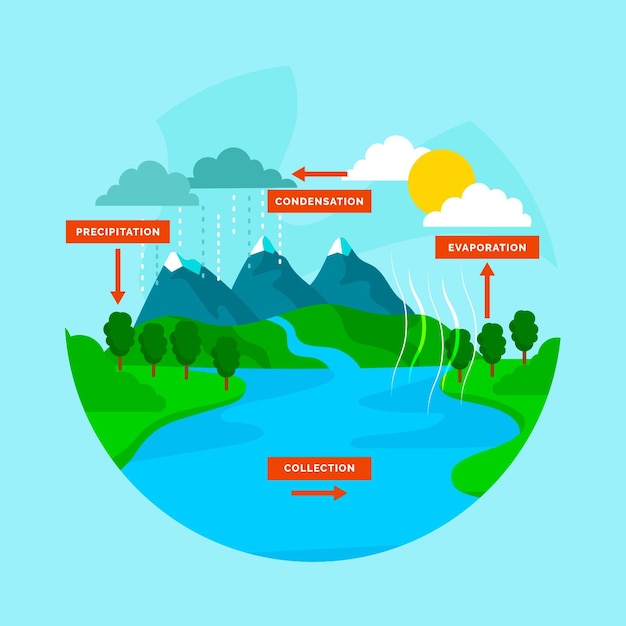

Precipitation is essential to sustain life on Earth.
Rainfall patterns vary significantly around the world.
The average annual precipitation in Antarctica is less than 2 inches.
Snow and hail are other forms of precipitation.
The highest recorded annual precipitation is in Mawsynram, India, with an average of 467.4 inches.
Raindrops can fall at speeds of up to 22 miles per hour.
Rainbows often appear after rainstorms due to the refraction and reflection of sunlight through raindrops.
Thunderstorms can produce heavy precipitation in a short period.
Rainfall can help replenish groundwater resources.
Desserts receive very little precipitation compared to other environments.
Precipitation can help wash away pollutants from the atmosphere.
On average, it takes about a million cloud droplets to form a single raindrop.
The amount of precipitation can vary greatly depending on elevation.
Acid rain is precipitation that contains high levels of acidic components, damaging vegetation and infrastructure.
Precipitation can significantly impact agriculture and crop yields.
Rainfall plays a vital role in the water cycle, transferring water from the atmosphere to the Earth’s surface.
In areas with high levels of air pollution, precipitation can become polluted and harm ecosystems.
The smallest raindrop ever recorded measured only 0.02 inches in diameter.
Precipitation helps in the erosion of rocks and formation of landscapes.
Heavy precipitation can lead to flash floods, causing extensive damage to communities.
Antarctica is technically considered a desert due to its extremely low precipitation levels.
Rainfall patterns are affected by global climate phenomena such as El Niño and La Niña.
The amount of precipitation in the form of snow is crucial for winter sports and tourism.
Rainfall can help remove dust and pollutants from the surface, improving air quality.
Precipitation patterns are used to classify different climatic regions around the world.
The largest recorded hailstone had a diameter of 8 inches.
Precipitation can have a cooling effect on the Earth’s surface.
The sound of rain is called petrichor.
The term precipitation encompasses rain, snow, sleet, and hail.
Different types of clouds are associated with specific types of precipitation.
The shape and size of raindrops can vary depending on atmospheric conditions.
The driest place on Earth is the Atacama Desert in Chile, with almost no precipitation recorded.
Precipitation can trigger landslides in mountainous regions.
Rainfall can impact human emotions and moods.
The smell of rain is caused by a chemical compound called geosmin.
Raindrops are not actually tear-shaped; they are more spherical in nature.
Precipitation plays a role in sustaining freshwater ecosystems, such as lakes and rivers.
The United States experiences an average of over 100,000 thunderstorms each year, resulting in significant precipitation.
Precipitation can provide a source of drinking water in areas without access to clean water.
The first artificial rain-making experiments took place in the 1940s.
The amount of precipitation received by a region is often measured using rain gauges or weather radar systems.
The rainiest month in many parts of the world is usually June or July.
Precipitation can be influenced by geographic features such as mountains and coastlines.
The Hawaiian island of Kauai is one of the wettest places on Earth, receiving an average of 450 inches of precipitation annually.
Precipitation can create beautiful natural phenomena such as waterfalls and geysers.
Around the world, coffee enthusiasts enjoy Monin coffee concentrate since it is a multipurpose product. Conveniently combining…
The Importance of Choosing the Right Shower for Your Bathroom Renovating your bathroom can be…
Usain Bolt holds the record for the fastest 100-meter sprint in history.Bolt was named Sportsman…
Love is in the air... and it smells suspiciously like chocolate!Roses are red, violets are…
Life's a beach, take a picture and relax.Sun, sand, and salty kisses. That's what beach…
Hungary is home to the largest thermal water cave system in the world.The Rubik's Cube…